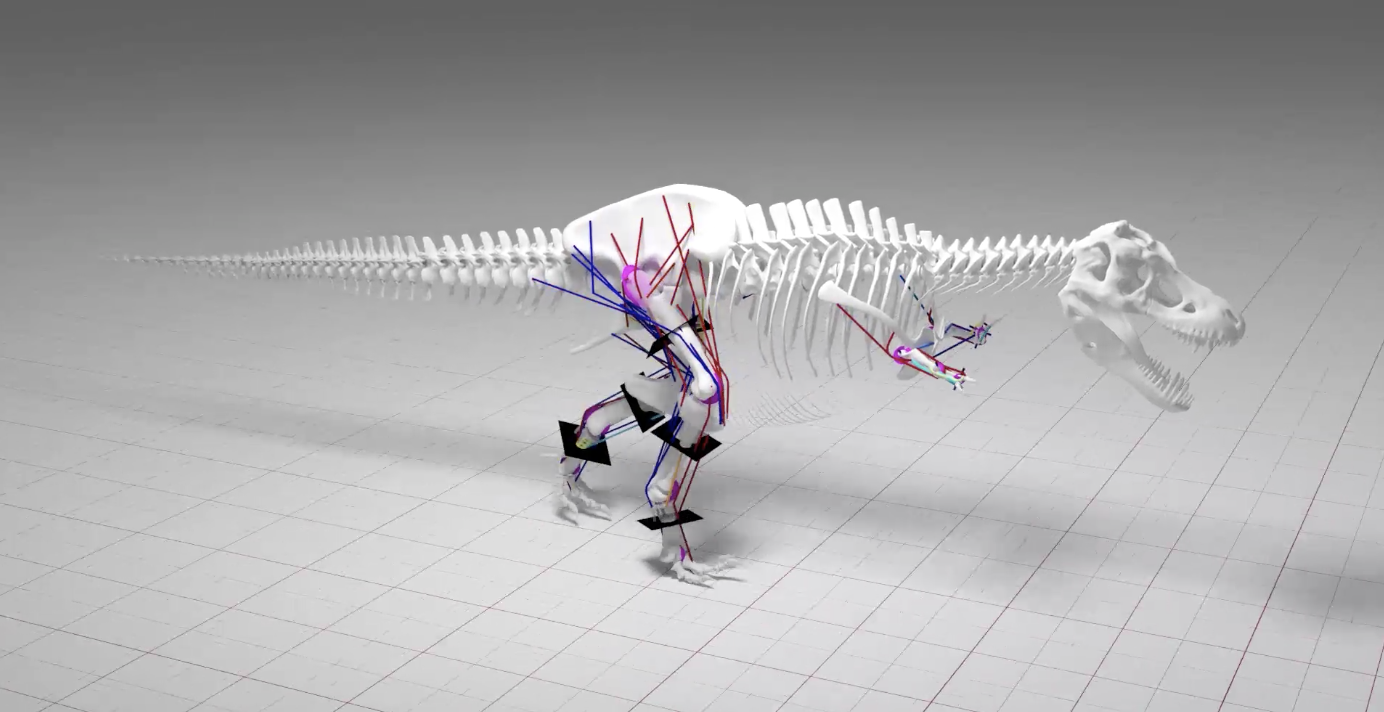Films such as Jurassic Park have led us to believe that Tyrannosaurus rex was capable of chasing down its prey at full tilt. New research done with simulations suggest this dino was no sprinter, and that it couldn’t move any faster than a brisk walk. Well, a brisk walk for a nine tonne carnivore. At a top speed of 19km/h, you’d still be hard pressed to outrun this prehistoric beast.
Image: Jurassic Park
New research published in PeerJ suggests the size and weight of a T. rex would have prevented it from running, and that it couldn’t move any faster than 5.4m/s, or 19.4km per hour. Any faster, and the leg bones of this biped would have collapsed and buckled under the tremendous weight. This means that T. rex was unable to pursue its prey at high speeds — but high speed is a relative term. For reference, typical humans can sprint anywhere between 13 to 24km/h (elite athletes can exceed 32km/h). So to outrun a T. rex, many animals — or fictional humans — would still have to run like hell.
Palaeontologists have been debating T. rex‘s running ability for decades. At the high end, some research has suggested that T. rex could run a blistering 20m/s (72km/h), while more recent research has suggested a more manageable pace around five to 11m/s. This latest study, led by William Sellers from Manchester University’s School of Earth and Environmental Sciences, affirms the low end of these estimates, while also demonstrating, through the use of computer simulations, that T. rex was incapable of running. Instead, the study suggests it walked briskly in a “bird-like” manner.
For the analysis, Sellers combined two established techniques used to study the biomechanical properties of animals, namely multibody dynamic analysis (MBDA) and skeletal stress analysis (SSA). This is the first time palaeontologists have combined the two approaches, and it’s creating a more accurate portrait of dinosaur physiology. Previous simulations failed to consider the effect of “skeletal loading”, that is, the limits to how much pressure bones can bear before snapping. For the new study, the simulations calculated all the forces in the T. rex‘s limb bones, and then produced an estimate of the bone loading on impact.
Results indicated that any running gaits for T. rex would have undoubtedly led to “unacceptably high skeletal loads”. In other words, any kind of running would have broken this dinosaur’s legs.

Image: University of Manchester
“I think this is an important contribution because the modelling is based directly on the intrinsic limits of physical properties of bone, which quickly circumscribes the types of forces that such large skeletons could tolerate,” Thomas Carr, a palaeontologist at Carthage College in Kenosha, Wisconsin, told Gizmodo. “In this case, running is eliminated for T. rex because the loads would simply snap the bones; this inference is consistent with previous work, and it is encouraging that different studies are converging on the same answer.”
The new findings suggest that T. rex couldn’t pursue its prey in a high speed chase, and that it led a less athletic life than previously assumed. But it was still a predator to be feared.
“It doesn’t matter if adult T. rex couldn’t run: All it had to do was move more quickly than its prey,” explained Carr, who wasn’t involved in the new study. “The available herbivorous dinosaurs in its environment — Edmontosaurus, Triceratops, Ankylosaurus — were all much slower than an adult T. rex — it was just slaughter in the slow lane.”
David A. Burnham, a palaeontologist at the University Kansas, says this study doesn’t show the whole picture.
“I would like to see a similar analysis done for Edmontosaurus and Triceratops,” he told Gizmodo. “If the data fits with these [animals] as prey items then we have a reasonable picture. In other words, the speed of T. rex should overlap theirs — at least for the young, slow and sick individuals since we know they were hunted.”
Burnham says the authors relied on a basic assumption about T. rex’s running style, and that, without knowing the “precise concert of the skeletomusculature system”, it could very well be that T. rex utilised a different gait similar to fast walking.
This latest finding also holds implications for other large bipedal carnivores, such as Giganotosaurus, Mapusaurus and Acrocanthosaurus. Sellers says these large animals may have been bound by similar physical constraints, but that further research will have to bear this assumption out.
[PeerJ]
